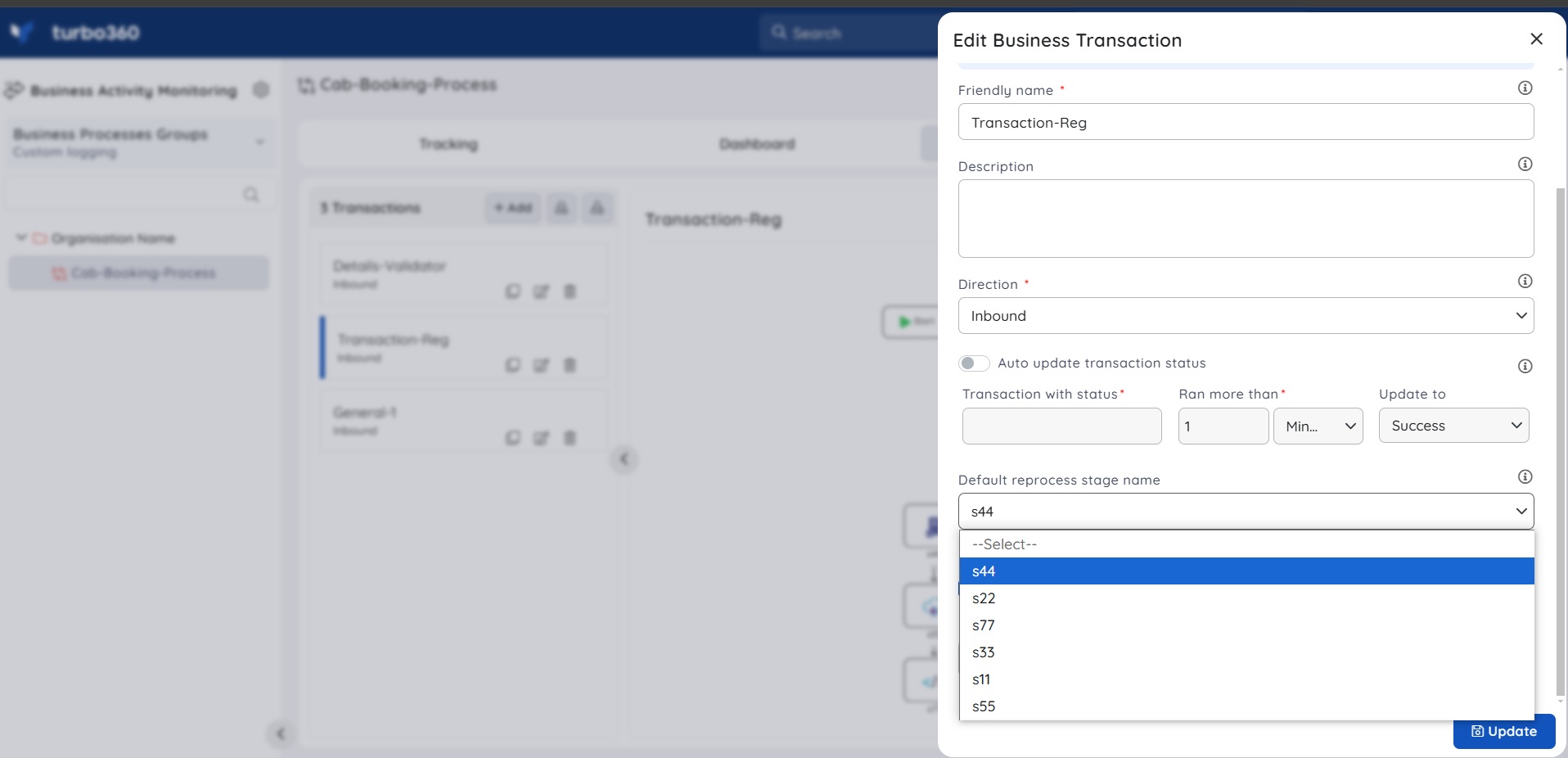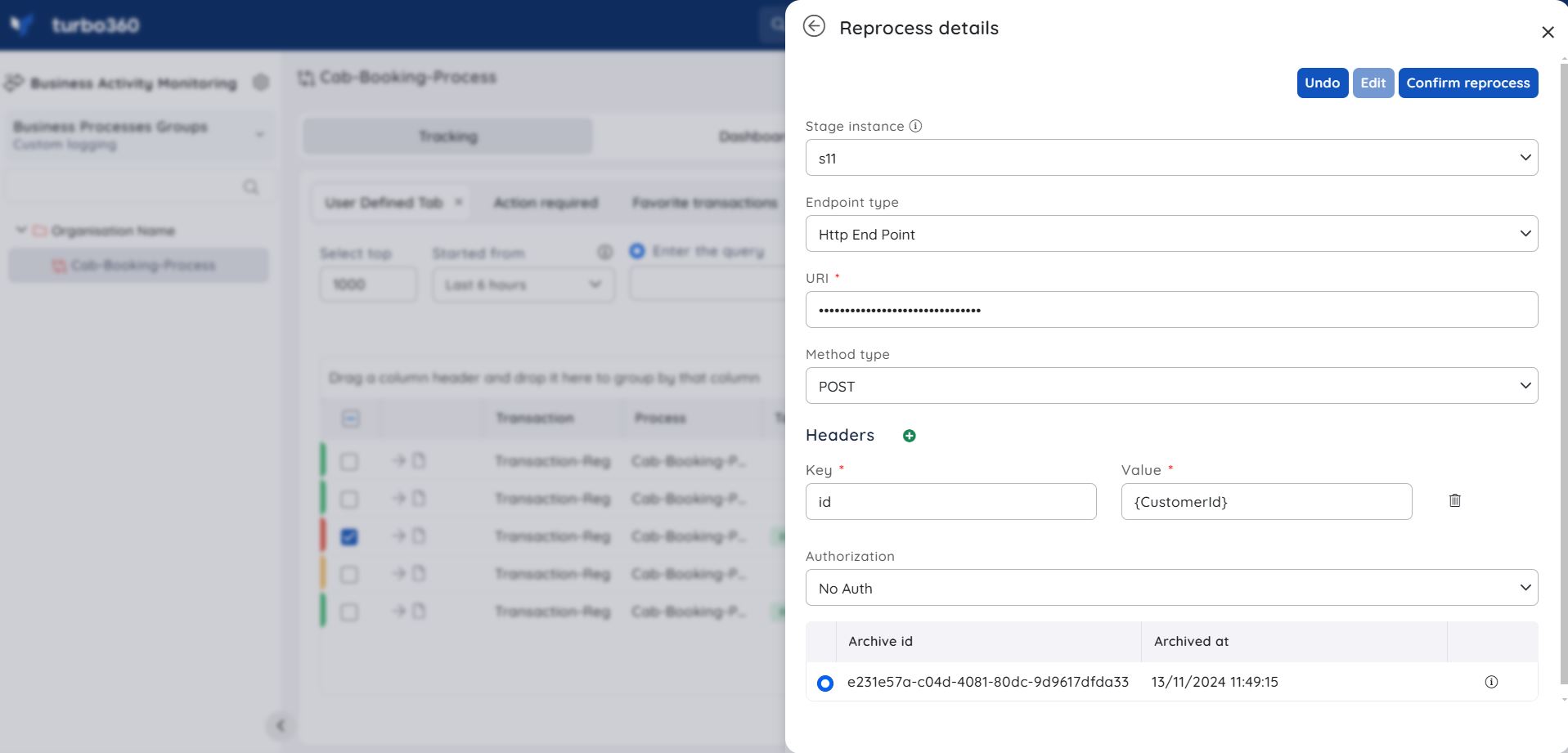- 19 Nov 2024
- 1 Minute to read
- Print
- DarkLight
- PDF
Dynamic Reprocessing
- Updated on 19 Nov 2024
- 1 Minute to read
- Print
- DarkLight
- PDF
Passing message properties as headers
Dynamic reprocessing is useful when the user wants to reprocess the tracked property values as a header.
This can be achieved by providing the name of the tracked property against the required Reprocess setting as shown below:
{Property Name}
Example: {CustomerId}
The following reprocess settings of the stage can be used with these properties:
URL and headers for HTTP endpoint.
System and Custom properties of Service Bus Queue and Service Bus Topic messages.
Subject, Event Type, and Data version for Event Grid.
Consider a scenario where the value of the CustomerId property must be sent as an HTTP header to an HTTP endpoint.
To achieve this, the user can provide the header key as id and Value as {CustomerId}.
When a transaction instance is reprocessed, the value of the tracked property CustomerId will be sent to the HTTP endpoint.
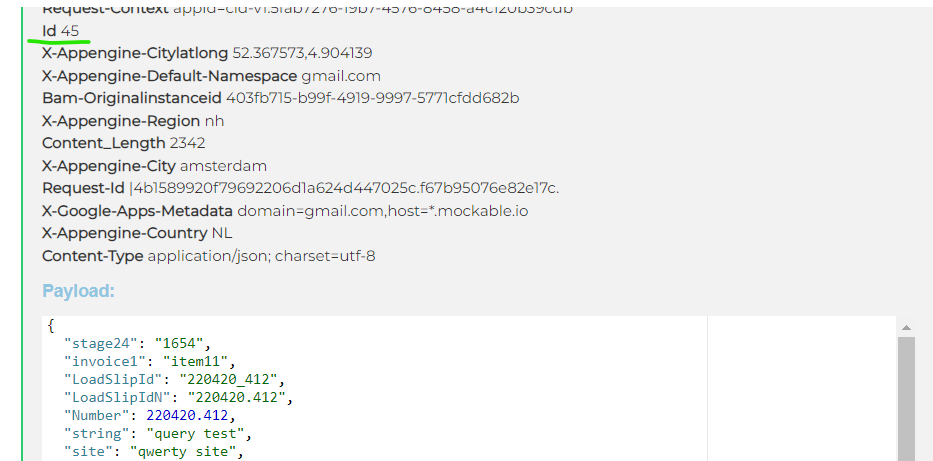
This can be seen in the message headers archived in one of the stages in the child transaction instance.
Regenerating Message ID
When multiple transaction instances are reprocessed to a Service Bus Queue or a Service Bus Topic, it is possible that the instances may have the same message id, and any of the transaction instances may be deleted if duplicate detection is enabled for either Service Bus Queue or Service Bus Topic.
Turbo360 Business Activity Monitoring (BAM) now addresses this issue for customers and offers a solution by allowing them to regenerate the message id, ensuring that no transaction instances are lost with respect to the Service Bus Queue and Service Bus Topic endpoints.
Individual transaction instances can have their message ids regenerated by editing their reprocess details with the endpoint set to Service Bus Queue/Topic by providing the endpoint details and selecting the regenerate option in the Message ID field box.
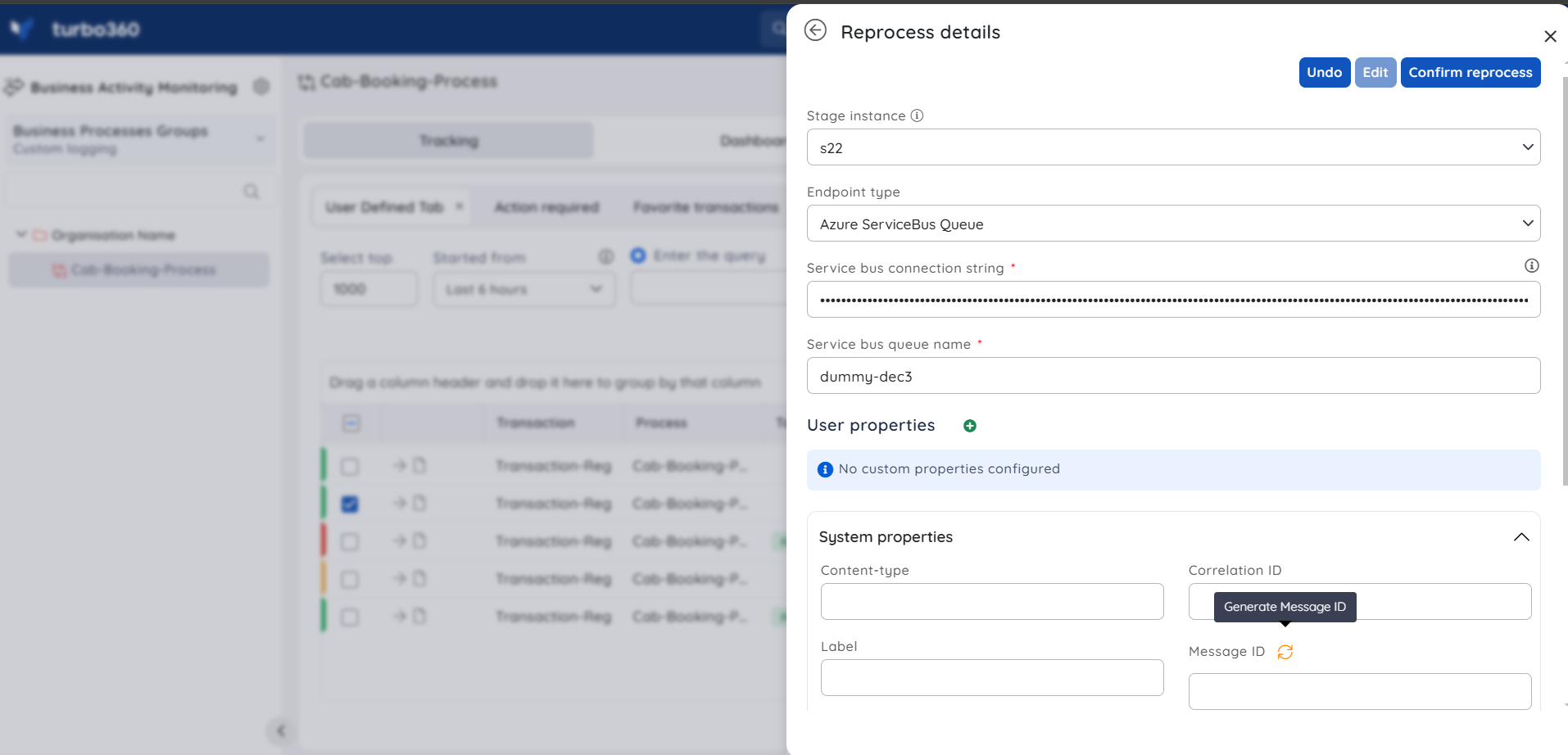
- Multiple transaction instances can be reprocessed simultaneously by selecting them and clicking Reprocess button. These transaction instances will be reprocessed to the default reprocess stage configured by the user.
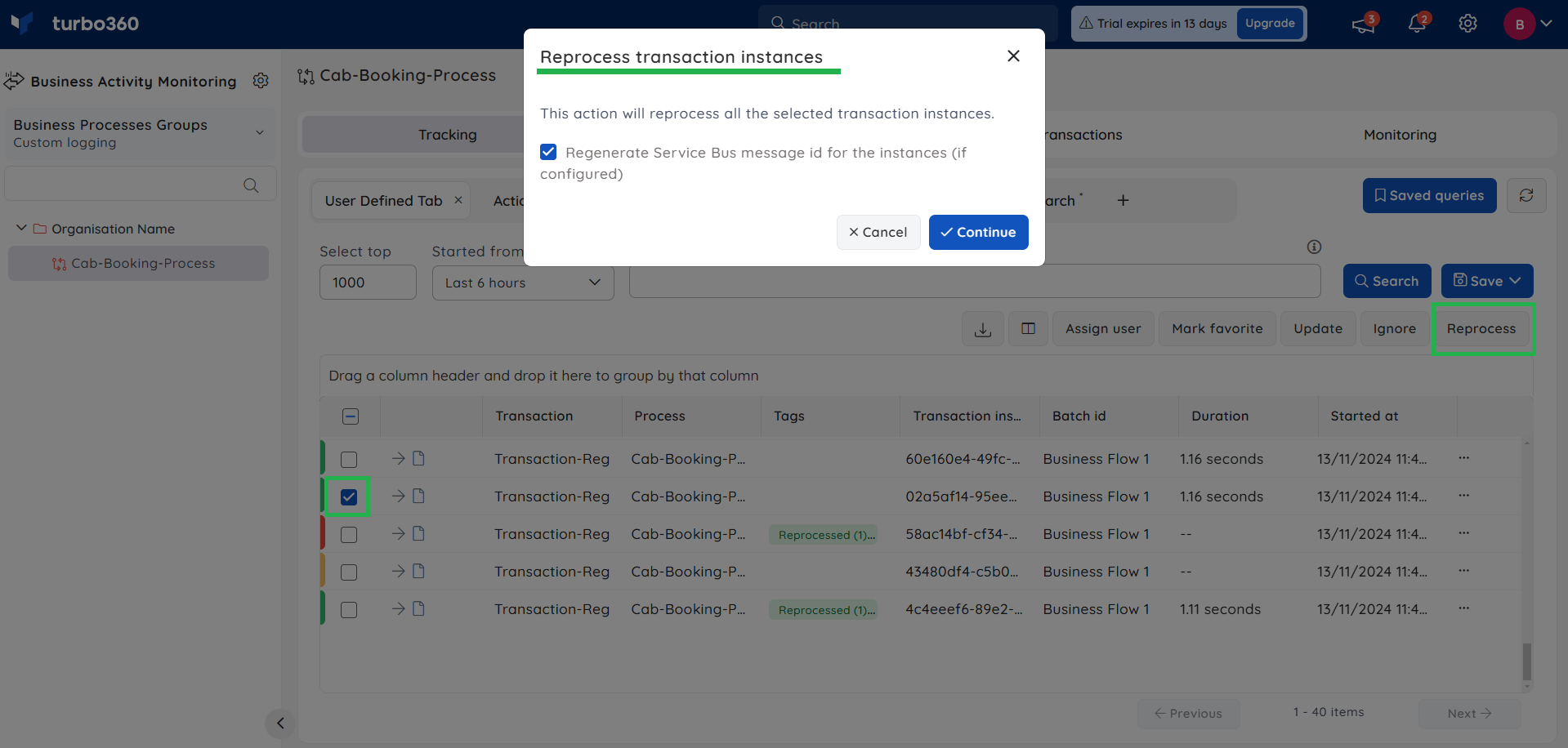
- By editing the desired transaction, the default reprocess stage can be changed.
